The most expensive types of wood have exceptional beauty, incredible strength, and unique qualities. They have served many uses, notably in fine furniture, musical instruments, fine art, and more.
Their appeal certainly knows no bounds. However, their popularity has led to sustainability challenges. Overexploitation and illegal trade threaten various species. Conservation efforts are essential to protect these valuable resources for the future. Let’s explore 13 of the most expensive types of wood, their characteristics, natural origins, conservation status, and more.
Definition of Expensiveness
Various factors determine the price of wood, making some types more valuable than others. Factors include rarity, growth rate, appearance, durability, demand, geographic origin, sustainability, cultural importance, and workability. These aspects interact in complex ways, resulting in varying prices for different types of wood in the market.
Rarity
One of the most significant factors contributing to the expense of wood is its rarity. If a type of wood is scarce or difficult to obtain, its value will increase due to limited supply and high demand.
Growth Rate
The rate at which a tree grows influences its price. Slow-growing trees, such as those in tropical forests, often produce denser and more durable wood, making them highly sought after and more costly.
Appearance and Odor
The visual appeal of wood plays a significant role in determining its value, in addition to the odor particular woods produce. Unique grain patterns, colors, and textures make certain woods desirable for fine furniture, crafts, and artistic creations. Some woods have a desirable odor. People often use these woods to make perfumes, incense, essential oils, and more.
Durability and Quality
Wood that is exceptionally durable and resistant to decay is more valuable as it ensures longevity and reliability in various applications.
Demand and Utility
The demand for a specific type of wood in various industries, such as furniture-making, musical instrument crafting, or luxury item production, can significantly impact its price.
Geographic Origin
The location where a particular wood species originates can also affect its value. Some types of wood may only grow in specific regions, making them more exclusive and costly to transport and export, thus demanding a higher price.
Sustainability and Legal Restrictions
Sustainably harvested woods or those with eco-friendly certifications may have higher prices due to their ethical and environmentally responsible sourcing. Additionally, legal restrictions on logging and trade can impact the availability and price of certain woods.
Cultural and Historical Significance
Wood species with cultural or historical significance may have higher value due to their rarity, restrictions on harvesting, and association with heritage and tradition.
Workability
Wood that is easy to work with and manipulate can command higher prices as it saves time and effort during crafting and construction processes.
Top 13 Most Expensive Types of Wood
Amazon Rosewood (Dalbergia spruceana)
Amazon Rosewood is a rare and expensive wood known for its captivating appearance. It features an orange or reddish-brown color with darker streaks, resembling the endangered Brazilian Rosewood. The wood’s uniform texture and open pores contribute to its unique grain patterns. Being a dense rosewood, similar to Cocobolo, requires careful handling during woodworking. The limited supply, combined with its beautiful appearance and similarities to Brazilian Rosewood, makes it a sought-after material for various high-end products.
Found in the Amazon Rainforest, particularly in Brazil, Peru, and Colombia, Amazon Rosewood’s limited supply adds to its exclusivity and elevated price. While it is not on the IUCN Red List of Threatened Species, all Rosewood species, including Amazon Rosewood, are on CITES Appendix II. This is to ensure responsible trade and conservation.
This wood is exceptional for applicatione xpensive lumbers available, commanding prices two to three times higher than most rosewood species. Its high cost is due to its small tree size and the high demand for ornamental work, contributing to its seemingly extraordinary price.
Its solid black appearance, unmatched by most other woods, makes it a prized material for small and ornamental items, such as piano keys, musical instrument parts, carvings, and other items.
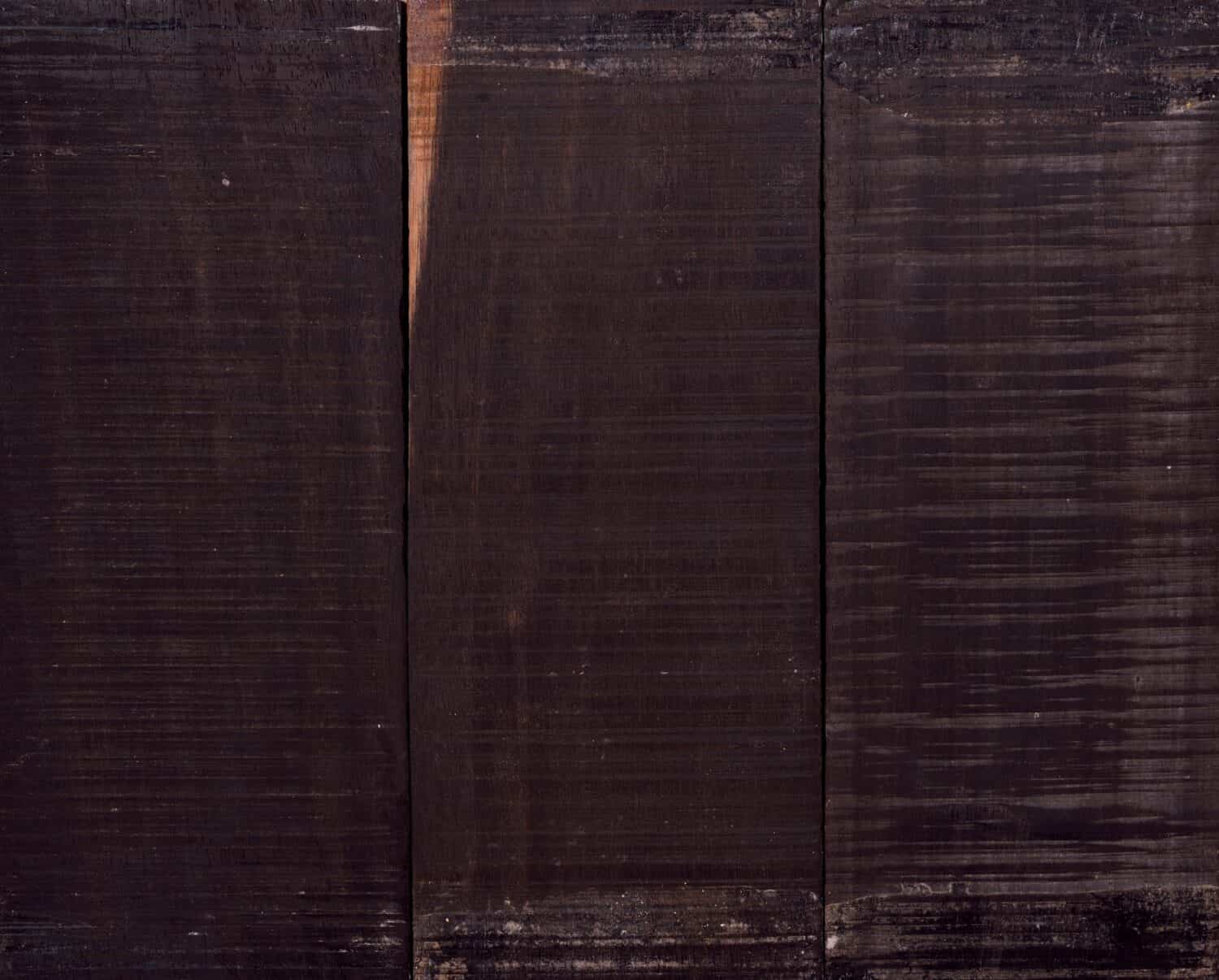
African Blackwood (Dalbergia melanoxylon)
African Blackwood is a strikingly dark wood, often appearing completely black with little discernible grain. Occasionally, it may display a slightly lighter hue, leaning towards dark brown or purplish tones. By comparing the thin, pale yellow sapwood, you can distinguish the darker heartwood. The grain is typically straight, contributing to its fine and even texture, accompanied by a captivating natural luster. Its density and hardness make it a challenging wood to work with using hand or machine tools.
It is native to various regions in Africa. It is in CITES Appendix II and has been since 2017. This has signaled the need for its conservation due to the genus-wide restriction on all Dalbergia species. While currently listed as near threatened on the IUCN Red List, the species is under close watch, as it may qualify as vulnerable or endangered shortly. Its slow growth rate makes sustainable management crucial to prevent overexploitation.
People love African Blackwood for its extraordinary hardness and density, making it one of the most prized and sought-after woods globally. The wood’s slow growth rate and typically small and gnarly trees contribute to its limited availability and high cost. Comparable to true ebonies like Gaboon Ebony, it commands a steep price in the market.
It is thought to be the original ebony used in Ancient Egypt thousands of years ago. The name “ebony” itself has roots in the Egyptian term “hbny,” which primarily referred to Dalbergia melanoxylon. It has a rich tradition in craftsmanship and is particularly renowned for its use in creating musical instruments like guitars, clarinets, oboes, and even turned objects.
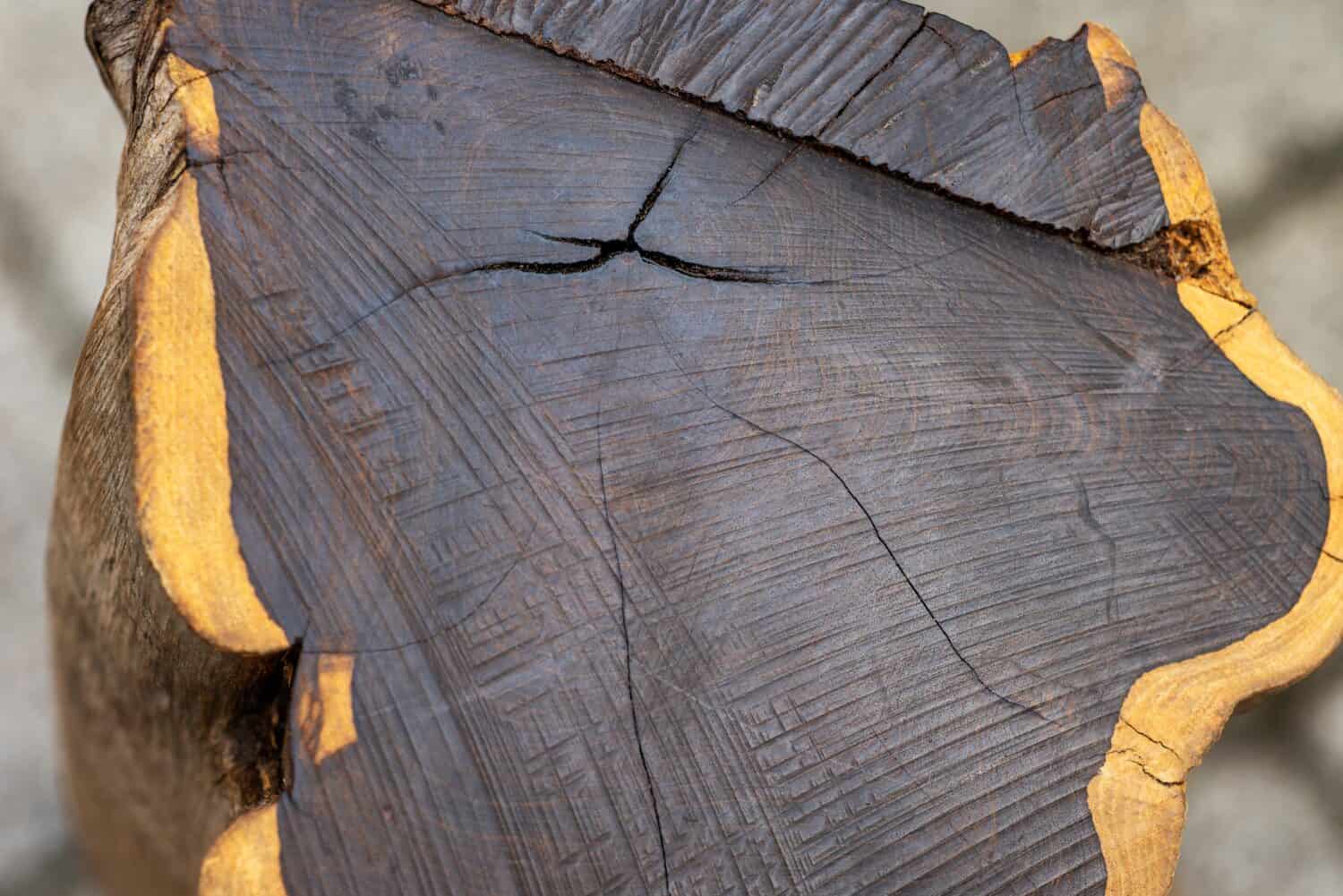
Red Sandalwood (Pterocarpus santalinus)
The heartwood of Red Sandalwood exhibits a range of captivating colors, from dark orange to a deep reddish purple, often featuring darker streaks. The hues deepen even further as time passes, transitioning to rich reddish purple or close-to-black tones. Its appearance and color can resemble Bois de Rose. The narrow sapwood, in pale white, creates a distinct demarcation from the heartwood. Red Sandalwood may display a wavy or interlocked grain figure.
Red Sandalwood is native to Asia and has faced a significant decline in its natural range due to overexploitation. This exploitation has led to its endangered status on the IUCN Red List due to a population reduction of over 50% in the past three generations. Since 1995 it has been listed in CITES Appendix II. The species’ slow growth rate has raised concerns. However, plantation sources are growing to meet the demand while alleviating pressure on wild populations. However, illegal smuggling continues to pose a threat to the species.
The allure and demand for Red Sandalwood, also known as Zitan, has led to exorbitant prices, particularly in China, where it is imported and used almost exclusively. This puts it in a separate price tier from even the most precious hardwoods found in the Western world. Counterfeit Zitan from other Pterocarpus or Dalbergia species can be a concern for buyers. Tight trading restrictions and smuggling further contribute to its high cost.
People have revered it for centuries for its use in fine furniture and exquisite carvings, reflecting its precious and cherished status.
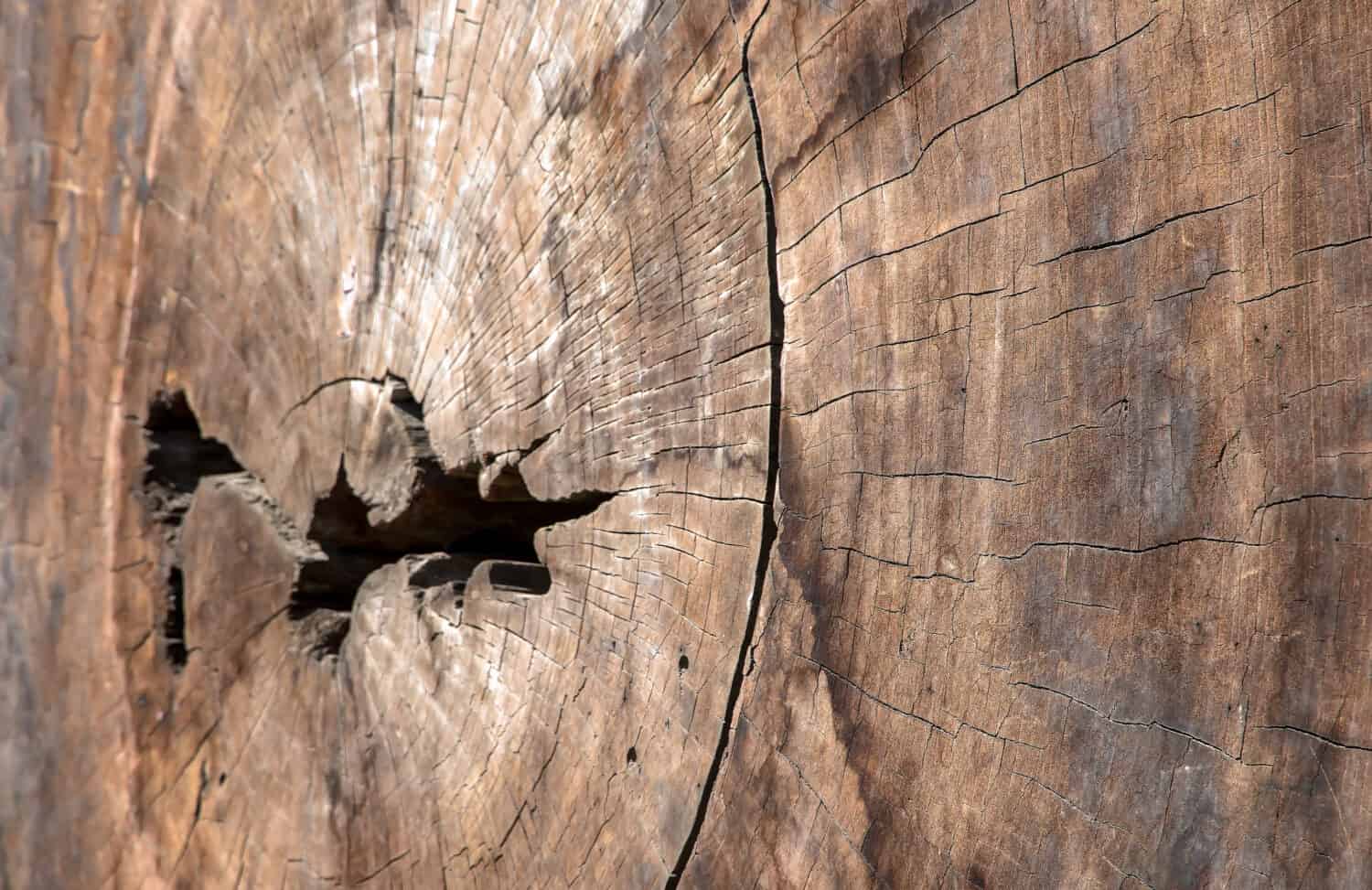
Bubinga (Guibourtia spp.)
Bubinga displays colors of pinkish red to darker reddish brown, accentuated by striking purple or black streaks. The pale straw-colored sapwood forms a distinct contrast with the heartwood. The wood often showcases various figure patterns, including pommel, flamed, waterfall, quilted, and more. Its fine to medium texture and moderate luster contribute to its overall attraction.
Bubinga is native to various African regions, with three species yielding Bubinga listed on CITES Appendix II since 2017. The natural habitat of these species is increasingly threatened due to overexploitation and habitat loss. This has led to their inclusion in the IUCN Red List, with two species classified as endangered and one as near threatened. Bubinga’s popularity in the Chinese market has led to heavy exploitation, the subsequent ban on both true rosewoods and Bubinga, and black market trading. Due to the endangered status of two of the Bubinga species and their threatened natural habitats, responsible sourcing and conservation efforts are vital to protect these valuable hardwoods from further decline.
Despite its endangered status, Bubinga remains available in North America, with prices for unfigured wood falling within the mid-range for imported hardwoods. However, the rarity and unique figure patterns, such as waterfall and pommel, significantly increase their value, making these varieties much more expensive.
Its strength-to-weight ratio ranks among the best in the world. People have utilized it in veneer, fine furniture, specialty items, and more. Additionally, its large growth allows for the creation of natural-edge slabs.
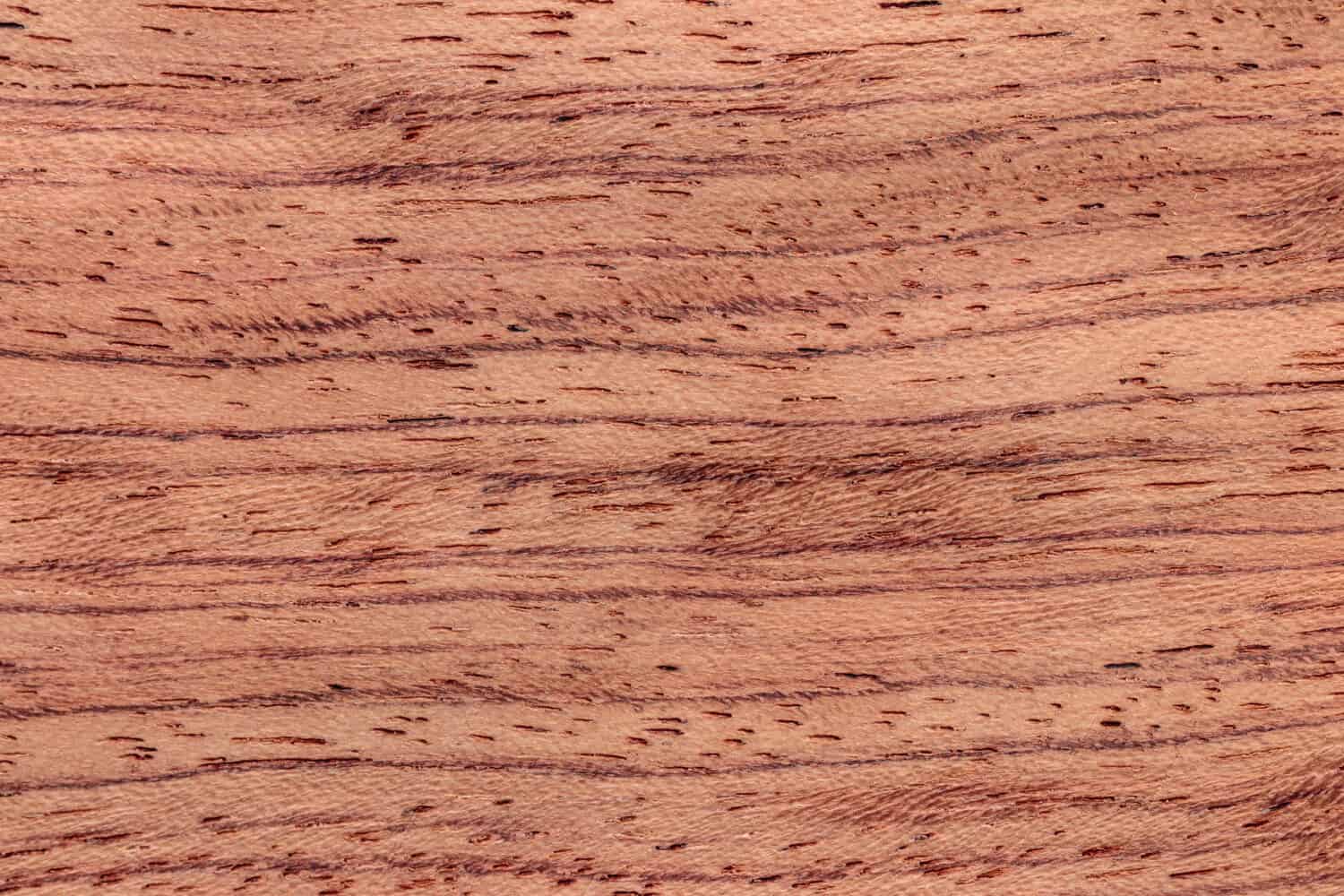
Pink Ivory (Berchemia zeyheri)
Pink ivory showcases a stunning array of colors, ranging from pale brownish pink to bright, almost neon pink. Sometimes even deep red shades. The most sought-after pieces boast a vibrant pink hue. The wood may feature a curly or fiddleback grain pattern, adding to its visual appeal. Its fine and even texture enhances the wood’s natural luster.
Pink ivory is native to southern Africa, with South Africa being one of the primary sources. While some reports suggest that the tree is relatively common in certain regions, large trees with straight, defect-free trunks are much rarer. It is not listed in the CITES Appendices or the IUCN Red List of Threatened Species. However, responsible sourcing and conservation efforts are essential to ensure its continued existence, given its rarity and the increasing demand for exotic woods.
Pink ivory is a scarce and valuable commodity. It often fetches high prices comparable to Gaboon Ebony, another costly African import. Its rarity, vibrant color, and unique grain patterns contribute to its exclusivity and elevate its value in the market.
Pink ivory holds cultural significance among the Zulu people of South Africa, who consider the tree sacred. Traditionally, the Zulu people reserved this wood for royalty. The wood’s exquisite appearance makes it a prized material for various artistic applications, such as carving, fine art, turned objects, and other things.
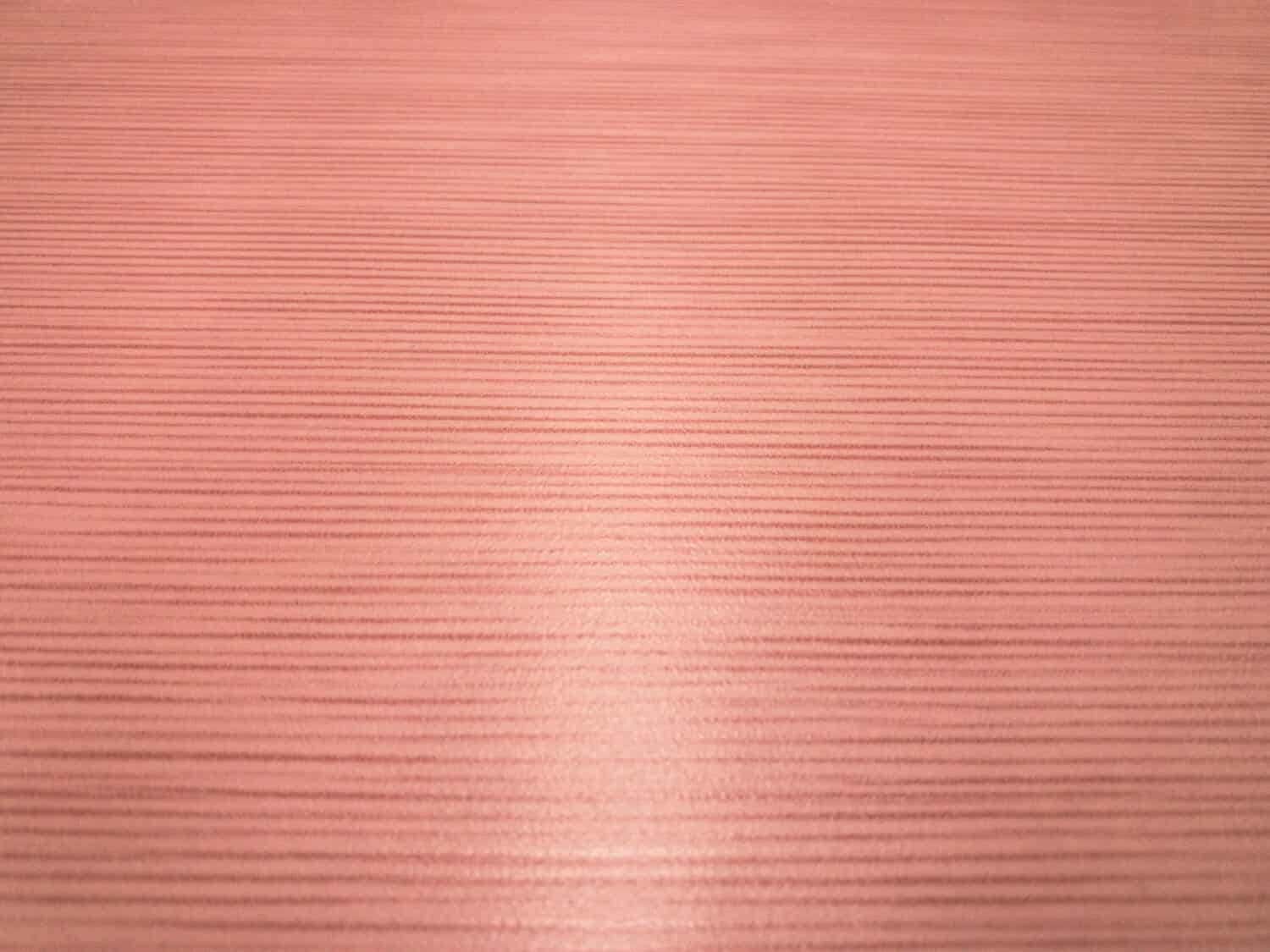
Ziricote (Cordia dodecandra)
Ziricote boasts a striking appearance of medium to dark brown colors, often accompanied by green or purple hues. Distinctive black growth rings create a captivating “spider-webbing” or “landscape” grain figure. The wood’s medium to fine texture enhances its natural luster, making it visually appealing. It also has a higher density.
Ziricote is native to the tropical regions of Central America, including countries such as Mexico, Belize, and Guatemala. Its unique look and rarity have contributed to its desirability in woodworking.
Ziricote commands a high price, surpassing some rosewood varieties and approaching the cost of certain types of ebony. Its scarcity and limited availability in narrow boards or turning squares contribute to its high value. Furthermore, its unique appearance and exceptional workability make it highly sought after in fine woodworking projects.
It is not currently listed in CITES Appendices or the IUCN Red List of Threatened Species. However, as with any rare and valuable wood, responsible and sustainable sourcing is essential to ensure long-term conservation.
This wood finds use in art, furniture, cabinetry, musical instruments such as acoustic and electric guitars, turned objects, and other items.
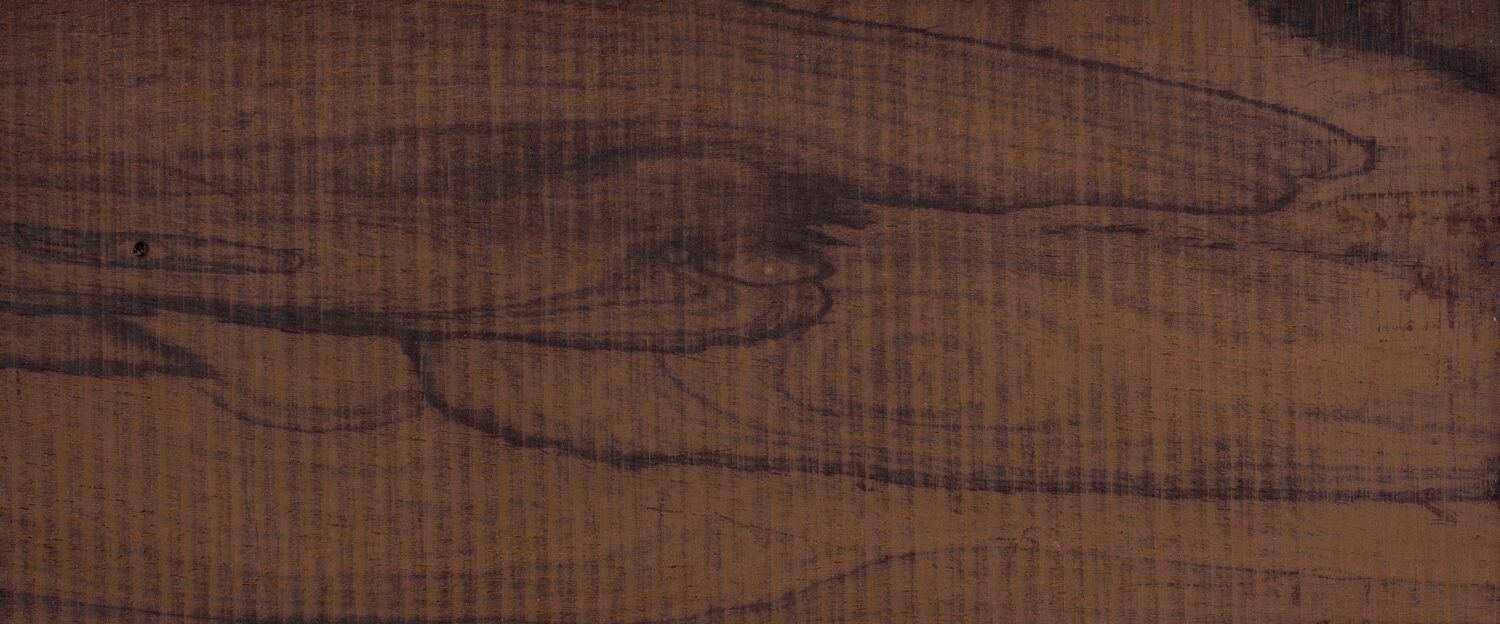
Brazilian Rosewood (Dalbergia nigra)
Brazilian rosewood showcases a stunning array of colors, from darker chocolate brown to lighter purplish or reddish-brown, complimented with darker contrasting streaks. Its unique grain pattern, often called “spider-webbing” or “landscape,” resembles Ziricote wood. The wood has a uniform, medium to coarse texture with medium-sized open pores, and its grain is typically straight, occasionally displaying interlocked, spiraled, or wavy patterns. It is easy to work with hand and machine tools, and it turns and finishes nicely.
Brazilian rosewood’s natural habitat is in South America, particularly in Brazil. However, due to overexploitation and a decline in its natural range, its population has drastically reduced, leading to its vulnerable status. Due to its endangered status and declining population, Brazilian rosewood is protected under CITES Appendix I and the IUCN Red List. Responsible and sustainable practices are crucial to preserve this precious wood and prevent further exploitation.
Brazilian rosewood has exceptional value. It is considered one of the most sought-after hardwoods worldwide. Its high demand and limited supply contribute to its exorbitant price. Additionally, stringent regulations imposed by CITES Appendix I restrict its import and export, such as sales being primarily limited to reclaimed or pre-existing lumber, further elevating its cost.
People have historically used Brazilian rosewood for its strength, hardness, stability, beauty, and acoustic properties. People have utilized it in various applications, including fine furniture, cabinetry, flooring, acoustic guitars, piano cases, turned objects, and other items. However, due to its restricted trade, people must consider sustainable alternatives.
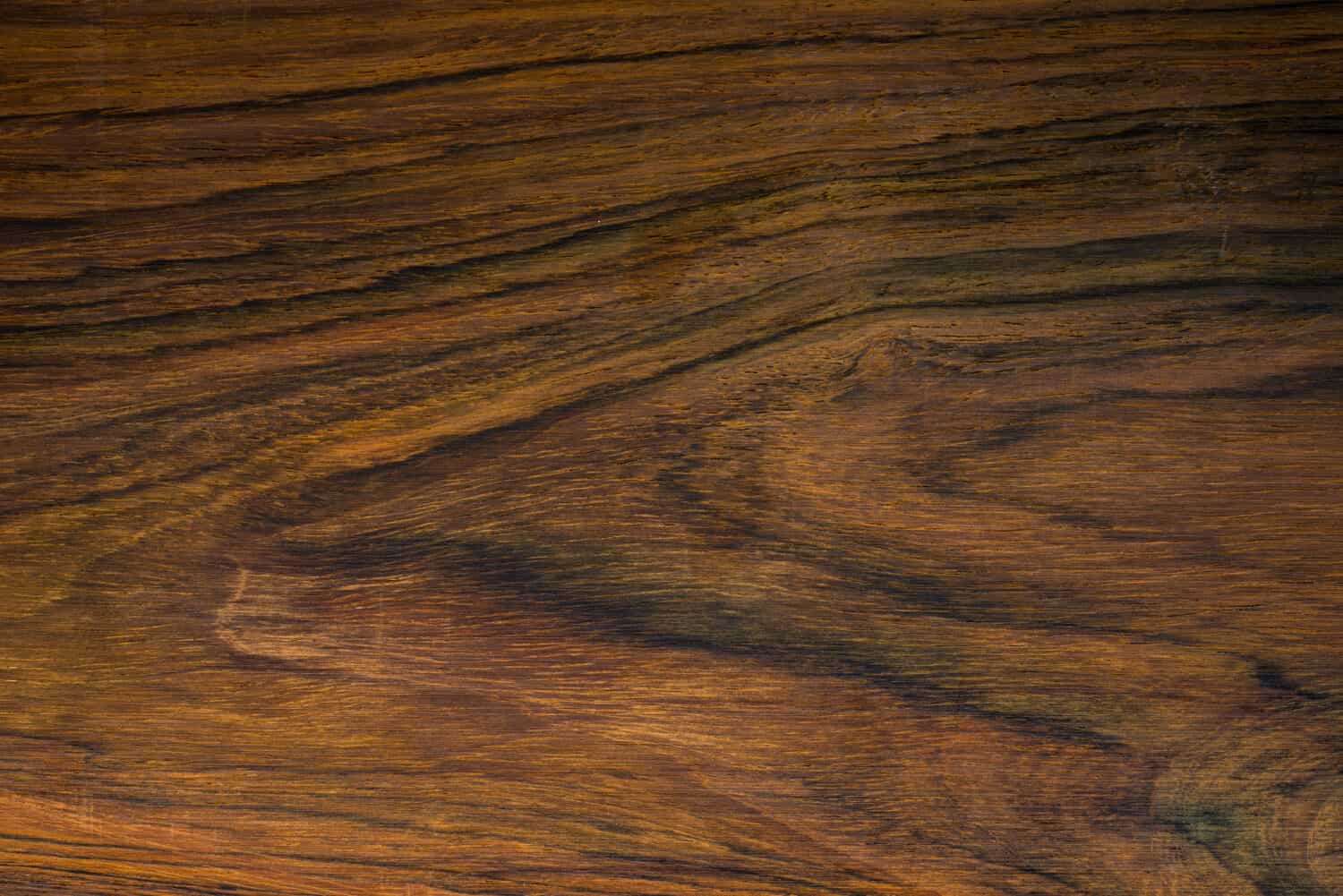
Bocote (Cordia spp.)
Bocote wood boasts a striking appearance with a yellowish-brown body adorned by dramatic dark brown to nearly black stripes. As time goes by, the colors deepen. Its grain pattern is equally captivating, particularly in flatsawn areas, showcasing eye-catching figures. The wood texture is medium and uniform, and its naturally oily/waxy feel contributes to its pleasant luster. Its workability is generally favorable and can be easily worked and machined with good results.
Bocote is not listed in the CITES Appendices or on the IUCN Red List of Threatened Species. It is native to various regions across Mexico, Central America, and South America. However, specific natural habitats may vary depending on the Cordia species. As always, responsible sourcing and management are crucial to ensure the long-term viability of this valuable wood.
Bocote’s zebra-like contrasts and eye-catching figures make it a visually captivating wood. It is expensive, generally priced mid-to-high for exotic hardwoods. Its striking appearance and bold figure make it highly sought after for ornamental and decorative purposes. People can use it for making fine furniture, cabinetry, flooring, musical instruments, turned objects, and more. Bocote remains a desirable choice for various decorative and ornamental projects.
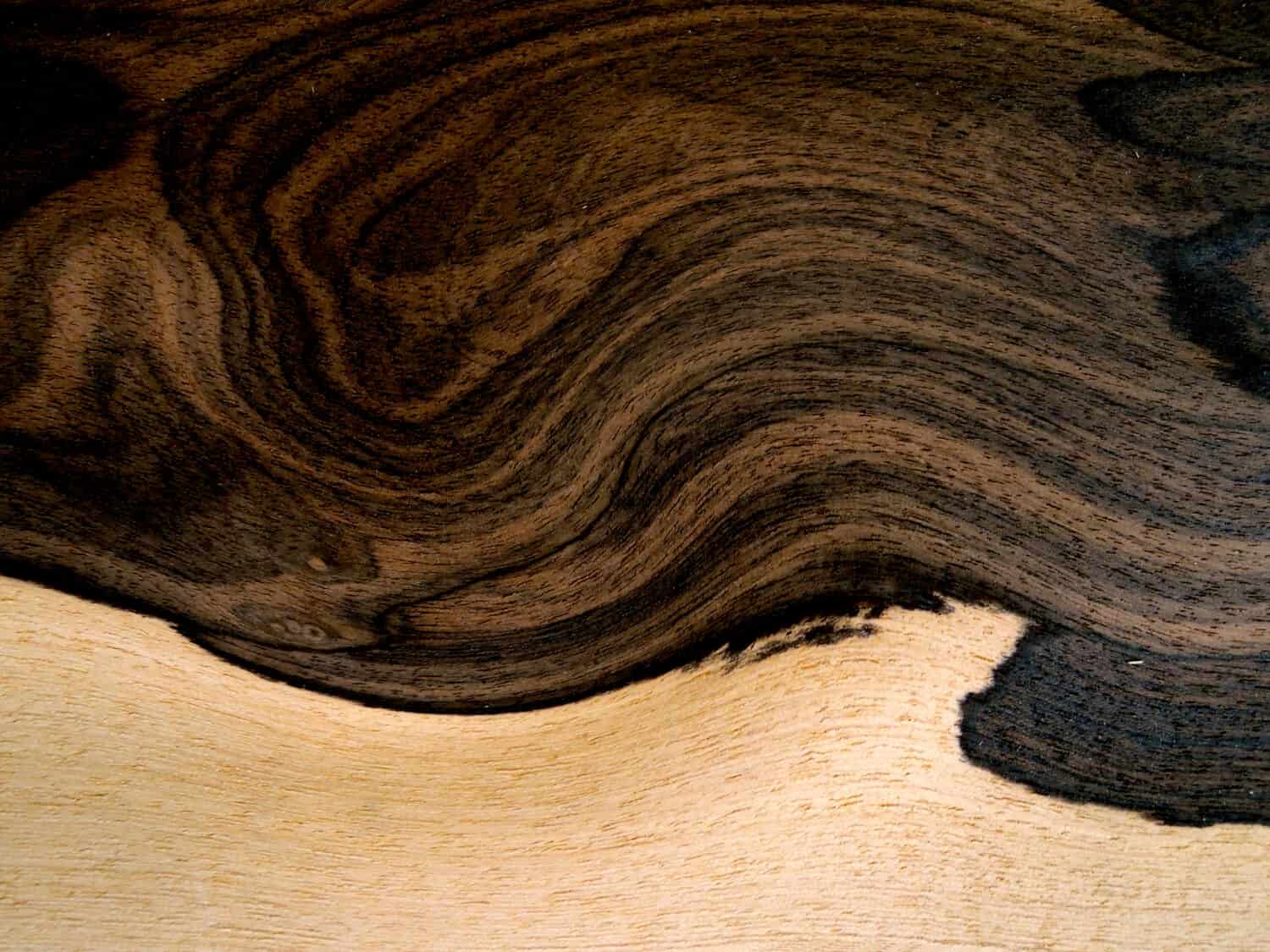
Holly Wood (Ilex opaca)
Holly wood boasts an exquisite pale white color with a remarkably uniform appearance, often lacking visible grain patterns. However, knots are common in this wood, which can reduce its usable area. To maintain the pristine white color, Holly is usually cut during the winter and promptly kiln-dried. However, this wood can develop a bluish/gray fungal stain if not dried rapidly after cutting. The grain is interlocked and irregular, presenting a medium to fine uniform texture that has a moderate natural luster.
Holly wood is native to regions across the eastern United States. It is not currently listed in the CITES Appendices or on the IUCN Red List of Threatened Species. However, responsible and ethical sourcing is always essential to ensure the long-term viability of this wood.
Holly is an expensive domestic lumber sold in small quantities. It is rarely available for commercial sale. Its rarity and limited quantities, combined with its ornamental and decorative purposes, contribute to its higher price.
People have used Holly for inlays, furniture, brush handles, turned objects, and other items. Holly’s pale white color and smooth texture make it a preferred choice for intricate and delicate designs. Holly remains prized for adding elegant touches to fine crafts and artisanal works.

Lignum Vitae (Guaiacum officinale and G. sanctum)
Lignum Vitae, also known as the “tree of life” or “wood of life” in Latin, showcases a mesmerizing array of heartwood colors. They can range from olive to dark green/brown, even nearly black, with a reddish tint. As this wood ages and is exposed to light, its color tends to deepen, adding to its allure. The grain is interlocked, with a fine texture. Lignum vitae has a high natural oil content, allowing it to be polished to a magnificent luster. Its raw wood surfaces may feel greasy or oily to the touch.
Lignum Vitae is native to Central America and northern South America. However, this remarkable wood is now an endangered species due to severe reductions in its populations and centuries of exploitation for both its wood and resin extracts. Lignum Vitae is on the IUCN Red List as endangered. This is due to its critical decline in populations and prolonged exploitation. Its historical significance as “wood of life” for various medicinal uses has added to its cultural and ecological value, driving efforts to protect and conserve this unique tree species.
Due to being listed in CITES Appendix II, the trade of Lignum Vitae is restricted. This is due to its endangered status, resulting in very high prices whenever it is available, often from questionable sources. It is one of the heaviest and hardest woods in the world, contributing to its exceptional value. Lignum vitae’s ability to provide self-lubrication due to its natural oils makes it highly prized for submerged or ground-contact applications, offering excellent wear resistance.
People have utilized this wood to create tool handles, mallet heads, bearings, bushings, pulley wheels, and turned objects. Its resilience in marine applications makes it ideal for propeller shaft bearings on ships, making it a symbol of strength and endurance.
Despite its exceptional properties, Lignum Vitae’s exploitation over the years has pushed it to the brink of extinction. Conservation efforts are crucial to ensure the survival of this extraordinary and treasured wood species for future generations.
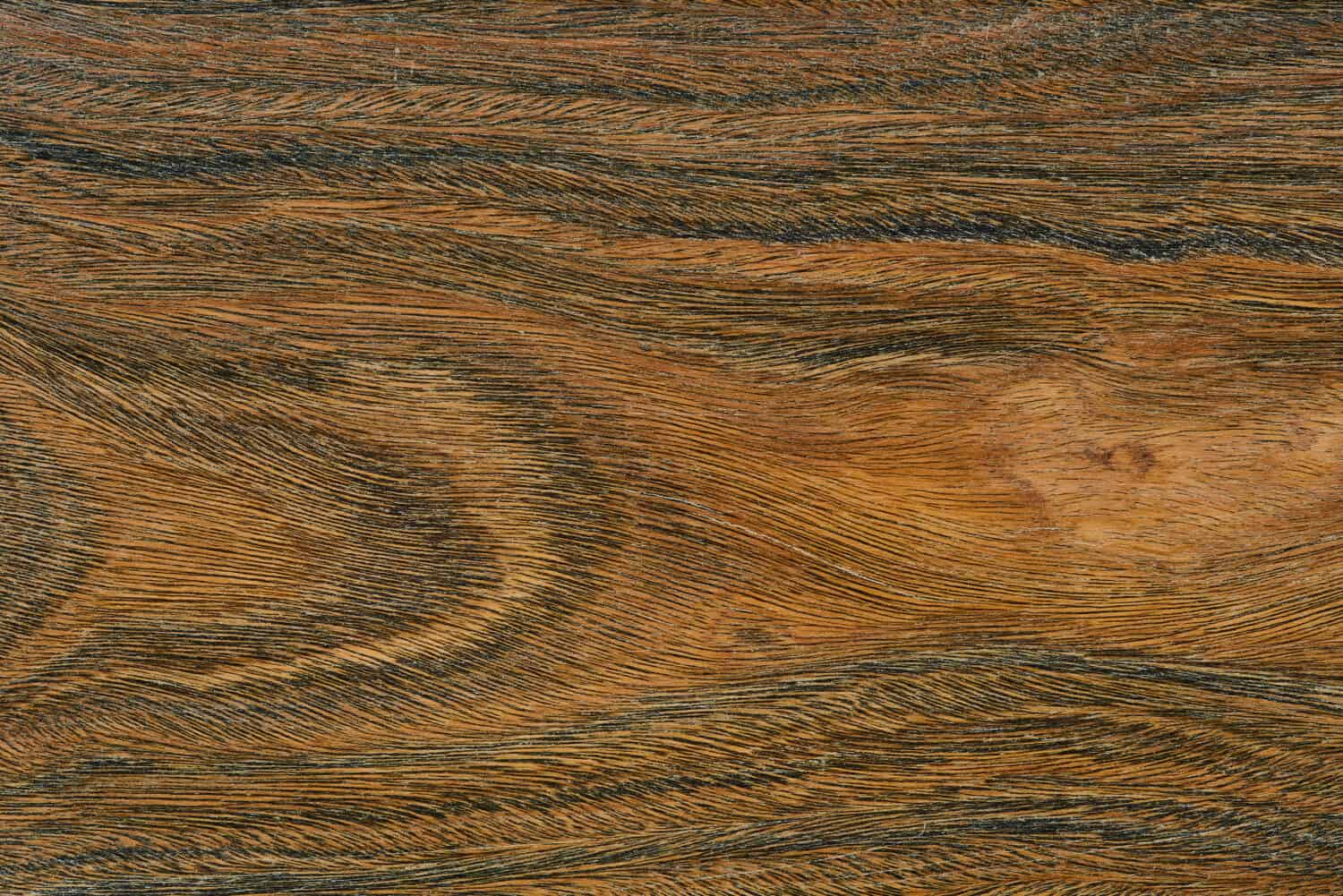
Cocobolo (Dalbergia retusa)
Cocobolo comes in various vibrant colors, ranging from yellow, orange, and red to multiple shades of brown, often embellished with streaks of black or purple. Its sapwood stands in stark contrast with a very pale yellow hue. The colors deepen and intensify with age, making it even more enchanting over time. The wood’s grain is typically straight to interlocked, showcasing a fine and even texture with a good natural luster.
Cocobolo thrives in its native habitat of Central America, including countries like Mexico, Nicaragua, Costa Rica, and Panama. However, its natural range has declined over the years, contributing to its vulnerable status on the IUCN Red List. Cocobolo faces sustainability challenges due to a population reduction of over 20% that has taken place over the past three generations, primarily caused by the decline in its natural range and exploitation. As a result, since 2008, it has been listed in CITES Appendix II under the genus-wide restriction on all Dalbergia species. Responsible and sustainable management is crucial to protect this vulnerable species and ensure survival.
People seek out Cocobolo for ornamental purposes, leading to a relatively limited supply and high demand. This, along with its striking colors and figure, makes it quite expensive. It has exceptional durability and resistance to rot and insect attack, which adds to its value. It is also a prized material for fine furniture and musical instruments. However, working with Cocobolo can be challenging due to its high oil content, causing gluing difficulties and occasionally triggering allergic reactions in those working with it.
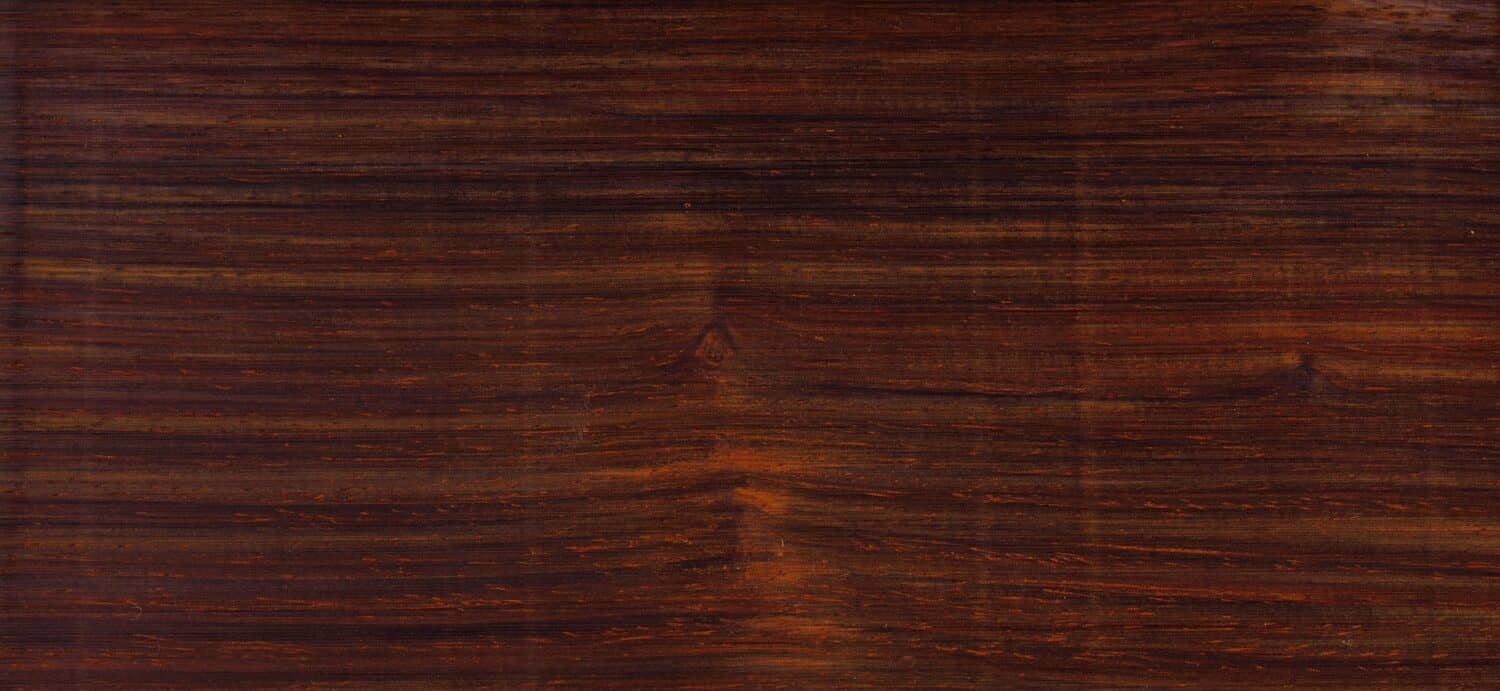
Koa Wood (Acacia koa)
Koa wood is a breathtaking hardwood with a color that can vary from medium golden to reddish brown, resembling the allure of Mahogany. Its growth rings often exhibit striking bands of contrasting colors, and some boards feature captivating ribbon-like streaks and wavy, curly grain patterns. The grain is often slightly interlocked, sometimes wavy, with a uniform medium to coarse texture. Koa is renowned for its workability, making it easy to work with and sand. However, figured wood or pieces with heavily interlocked grain may present challenges in planning and gluing. Nevertheless, Koa turns, stains, and finishes nicely.
Native to the islands of Hawaii, Koa wood thrives in this tropical paradise. It is expensive due to its exclusive habitat, limited supply, and dwindling resources. Exceptionally figured or curly Koa boards can command particularly high prices. The tree’s endemic nature to Hawaii makes it vulnerable. While not listed in the CITES Appendices, sustainable management is vital to safeguard this invaluable wood species.
People have traditionally used Koa wood to create musical instruments, including guitars and ukuleles, fine furniture, canoes, carvings, bowls, and specialty wood objects. It is a symbol of the islands’ rich heritage and artistic heritage.
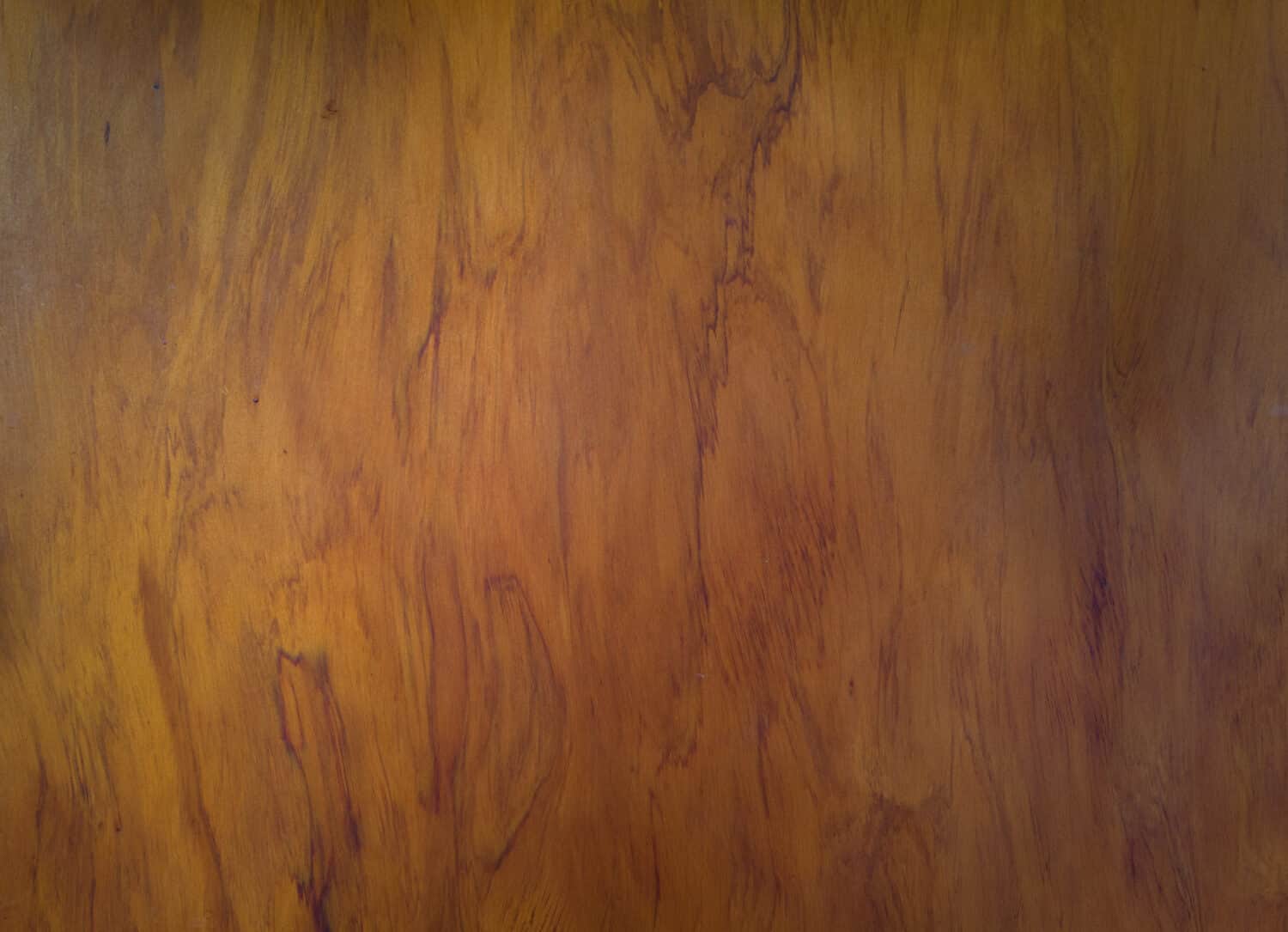
Uses of Expensive Woods
Expensive types of wood find their way into many high-end products, each showcasing these prized materials’ unique qualities and exquisite beauty.
Fine Furniture
Artisans and designers favor luxurious woods for crafting high-quality furniture pieces. These woods usually have striking colors, intricate grain patterns, exceptional durability, and unique qualities.
Musical Instruments
Some of the most sought-after woods for crafting high-end musical instruments have included the most expensive types of wood worldwide. Each wood affects the quality of the instrument. Many expensive types of wood are sought after for their resonance, stability, and ability to enhance tone or aesthetics.
Flooring
When it comes to luxurious flooring, there have been many favored most expensive types of wood largely due to appearance and durability. Each, with its unique appearance, offers striking flooring options, from bold and regal, to elegant and timeless and more.
Craftsmanship and Fine Art
Expensive types of wood can create high-end crafts and artistic masterpieces. For many years, many different types of wood have been used in custom woodworking, creating eye-catching sculptures and decorative pieces.
Luxury Items
Many Expensive types of woods can make perfumes, incense, and scented oils. Each of their distinct and captivating fragrances made them unique and highly sought-after.
Interior Design Accents
Various expensive wood species find their way into luxury interior design elements, such as ornate wall paneling, door frames, staircase railings, or turned objects. These woods elevate the aesthetic appeal of interiors, creating an ambiance of opulence and sophistication.
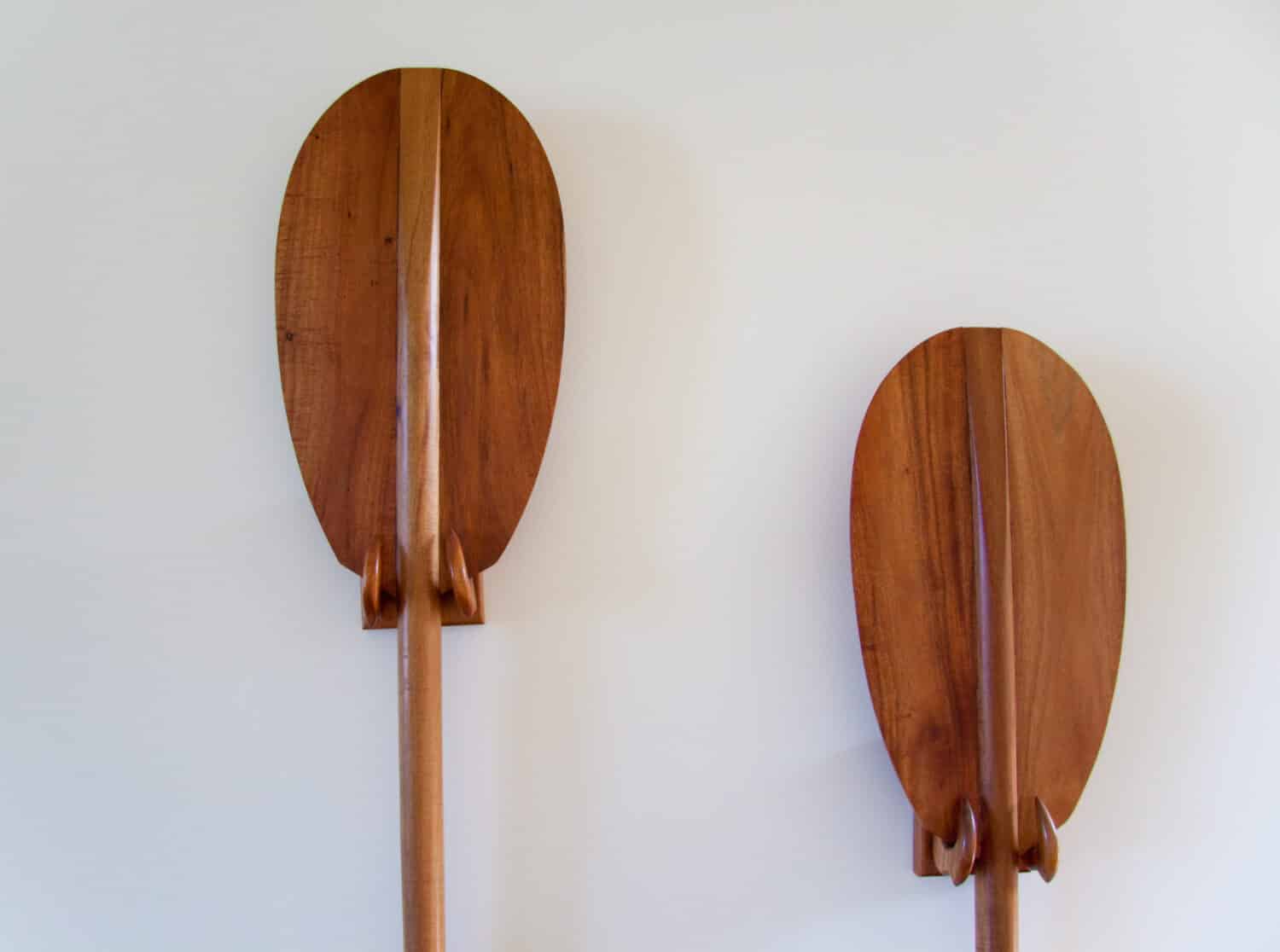 Sustainability and Conservation
Sustainability and ConservationThe issues of sustainability and conservation surrounding expensive types of wood are of paramount concern as the demand for these precious resources continues to rise. Harvesting these woods, often from slow-growing and limited natural habitats, poses significant threats to their existence. Rampant deforestation, driven by greed for profits, can lead to the loss of vital ecosystems and biodiversity, adversely impacting local flora and fauna.
One of the main challenges in sustainable management is ensuring that the rate of harvesting does not exceed the rate of natural regeneration. Slow-growing woods, such as African Blackwood and Gaboon Ebony, are particularly vulnerable to overexploitation. Once these trees are felled, it takes years, if not decades, for new trees to reach maturity and replenish the depleted populations. Without careful management, these valuable resources face the risk of depletion, threatening their existence for future generations.
CITES and IUCN
Conservation efforts are in place to protect these valuable woods and their ecosystems. The Convention on International Trade of Endangered Species (CITES) is an international agreement between most world governments. Established in 1973, it serves to monitor and protect species. It consists of a three-tiered list of endangered species: Appendix I, Appendix II, and Appendix III. Appendix I is the most critical and restricted. The inclusion of certain wood species in international agreements, like CITES Appendix II, restricts trade and regulates the harvest and export of these woods. The IUCN Red List of Threatened Species also provides valuable insights into the conservation status of various species, enabling targeted conservation strategies. Additionally, there is a growing movement towards establishing sustainable plantations to cultivate these precious woods, which helps alleviate pressure on natural habitats and promotes responsible management practices.
It is crucial to raise awareness among consumers, manufacturers, and policymakers about the importance of sustainable sourcing to safeguard these valuable resources. Supporting certified sustainable wood products and responsible suppliers can incentivize the industry to adopt more environmentally friendly practices. Collaboration between governments, conservation organizations, and local communities is essential to develop effective conservation plans and enforce regulations against illegal logging and trade.
By prioritizing sustainability and conservation, we can ensure the protection of these magnificent woods for future generations, preserving their economic value and ecological significance in maintaining a balanced and diverse ecosystem.
Summary of the Top 13 Most Expensive Types of Wood
| Rank | Expensive Wood | Native to: |
|---|---|---|
| 1 | Amazon Rosewood | Amazon Rainforest |
| 2 | Gaboon Ebony | East Africa |
| 3 | African Blackwood | Africa |
| 4 | Red Sandalwood | Asia |
| 5 | Bubinga | Africa |
| 6 | Pink Ivory | South Africa |
| 7 | Ziricote | Central America |
| 8 | Brazilian Rosewood | South America |
| 9 | Bocote | Central and South America |
| 10 | Holly Wood | Eastern United States |
| 11 | Lignum Vitae | Central America and northern South America |
| 12 | Cocobolo | Central America |
| 13 | Koa Wood | Hawaiian Islands |
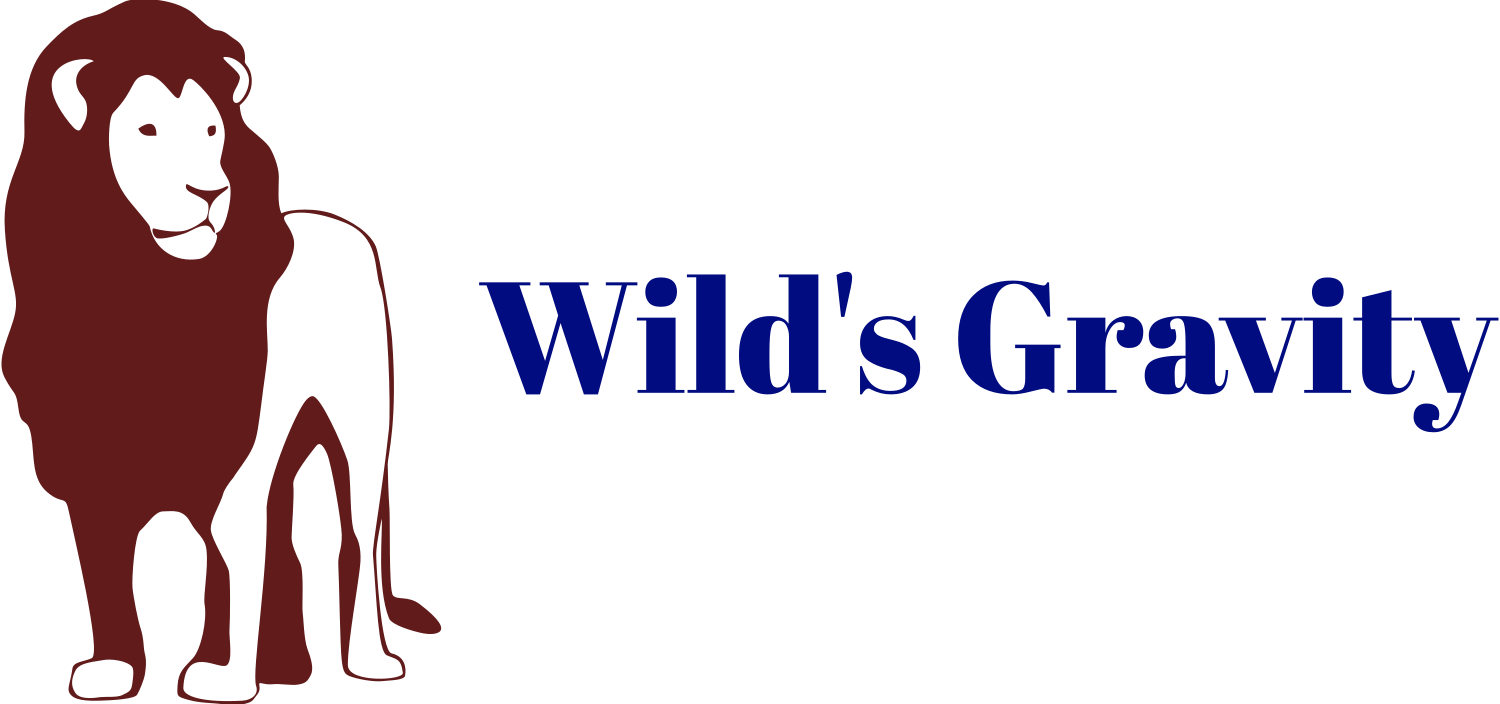


Post a Comment
0Comments